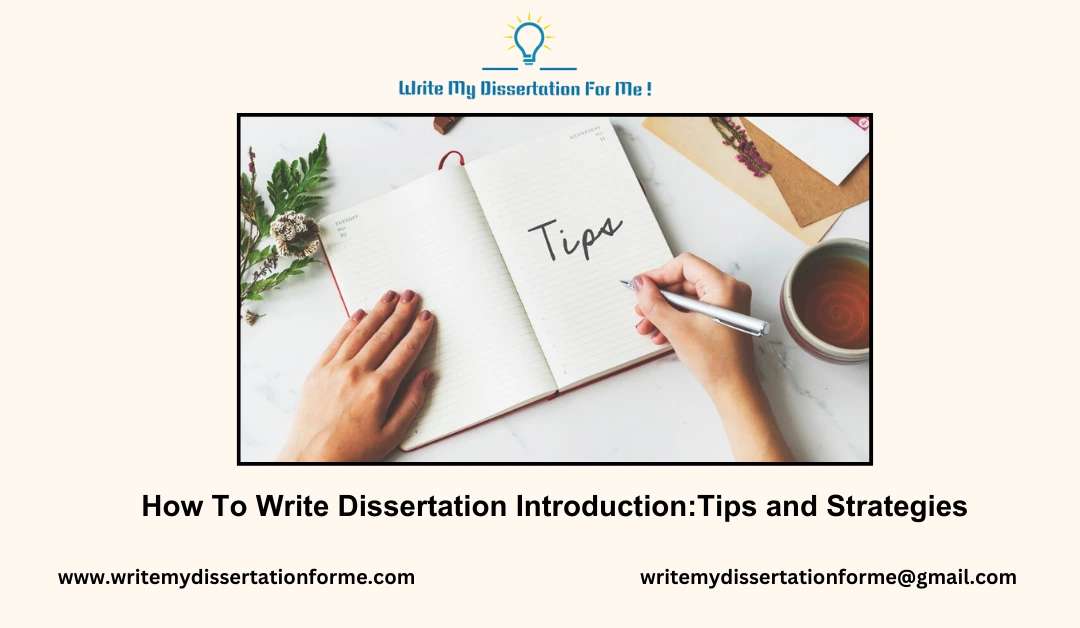How To Write Dissertation Introduction: Tips and Strategies
Feb 16 2024 | 03 min read

The dissertation introduction is the first step in your research process; it draws the reader in and sets the scene for what will happen next. This is your chance to define the importance of your research, list the goals of your study, and offer a guide for reading your dissertation. Strategic planning and thoughtful thought are necessary when creating an engaging introduction. We'll go over the key components of a dissertation introduction in this blog post, along with some helpful advice to get you started on the right foot.
Recognizing the Goal:
It's important to comprehend the main goal of a dissertation before getting into the specifics of writing one:
- Creating Context: Give readers some previous knowledge and context so they can understand the topic and its importance in the larger academic environment.
- Stating the Problem: Clearly state the research topic or problem that your work aims to answer, emphasizing its applicability and possible advances to the area.
- Establishing Goals: Clearly define the scope and focus of your study by outlining the precise goals or objectives of your research.
- A Sneak Peek at the Organization: Provide a succinct synopsis of the dissertation format, including an outline of the key chapters and the way your research is arranged.
Advice for Crafting an Enticing Introduction:
After clarifying the general goal of a dissertation beginning, let's look at some useful advice for creating one that grabs readers' attention and establishes the framework for your investigation:
- Start with a Hook: Draw the reader in right away by introducing your topic of study with a catchy hook or anecdote. This may be an intriguing story that establishes the mood for your research, a thought-provoking quotation, or a shocking fact.
- Provide Context: To help your readers get familiar with the topic, provide background information and context. Give a succinct overview of pertinent literature, emphasizing the main arguments, gaps, or disputes that your study seeks to resolve. This lays the groundwork for your contribution to the topic and shows that you have a thorough awareness of the body of existing scholarship.
- Describe the issue: Clearly state the research issue or problem that your study aims to answer. Describe the parameters of your investigation and provide justification for the importance or merit of the issue. This encourages readers to interact with your study and establishes the relevance of your research.
- Outline Objectives: Clearly state the precise goals or objectives of your study in your outline. What do you want your research to accomplish? Which queries are you trying to address? Having well-defined objectives helps readers comprehend the goal and extent of your study and establishes expectations for the topics the dissertation will address.
- Preview the Structure: Provide a quick synopsis of the dissertation's structure, including a list of the major chapters and how your research is arranged. This gives readers a roadmap for what to expect in the following chapters and aids in their navigation through your dissertation.
- Preserve Clarity and Conciseness: Make sure your introduction is focused, clear, and concise. Steer clear of superfluous jargon and technical terms that could turn off readers. When writing, strive for precision and clarity. Make sure that each line has a purpose and adds to the introduction's overall coherence.
Conclusion:
Creating a captivating introduction for your dissertation is an essential step in organizing your research. You can fascinate your readers and encourage them to participate in your study by providing context, articulating the problem, defining objectives, and giving a sneak peek at the structure. Don't forget to introduce yourself with a hook, give some backstory, and stay succinct and clear all throughout. You will be well-equipped to write an introduction that establishes the tone for your dissertation and creates the foundation for a fruitful research project if you keep these pointers and techniques in mind.
If you loved reading this, please share this,
also read

Writing a Dissertation Abstract
The dissertation abstract is a short and potent summary of your entire research. This description tells the reader what your ...

Common Methodology Mistakes in Dissertations: Improving Dissertation Quality
The methodology section is crucial to the complex process of writing a dissertation, which necessitates an organized approach...

Plagiarism-Free Thesis Proposals: Why Originality Matters in Academic Writing
When it comes to academic work, probably the most crucial thing to consider is the integrity of your work. It doesn’t matter ...